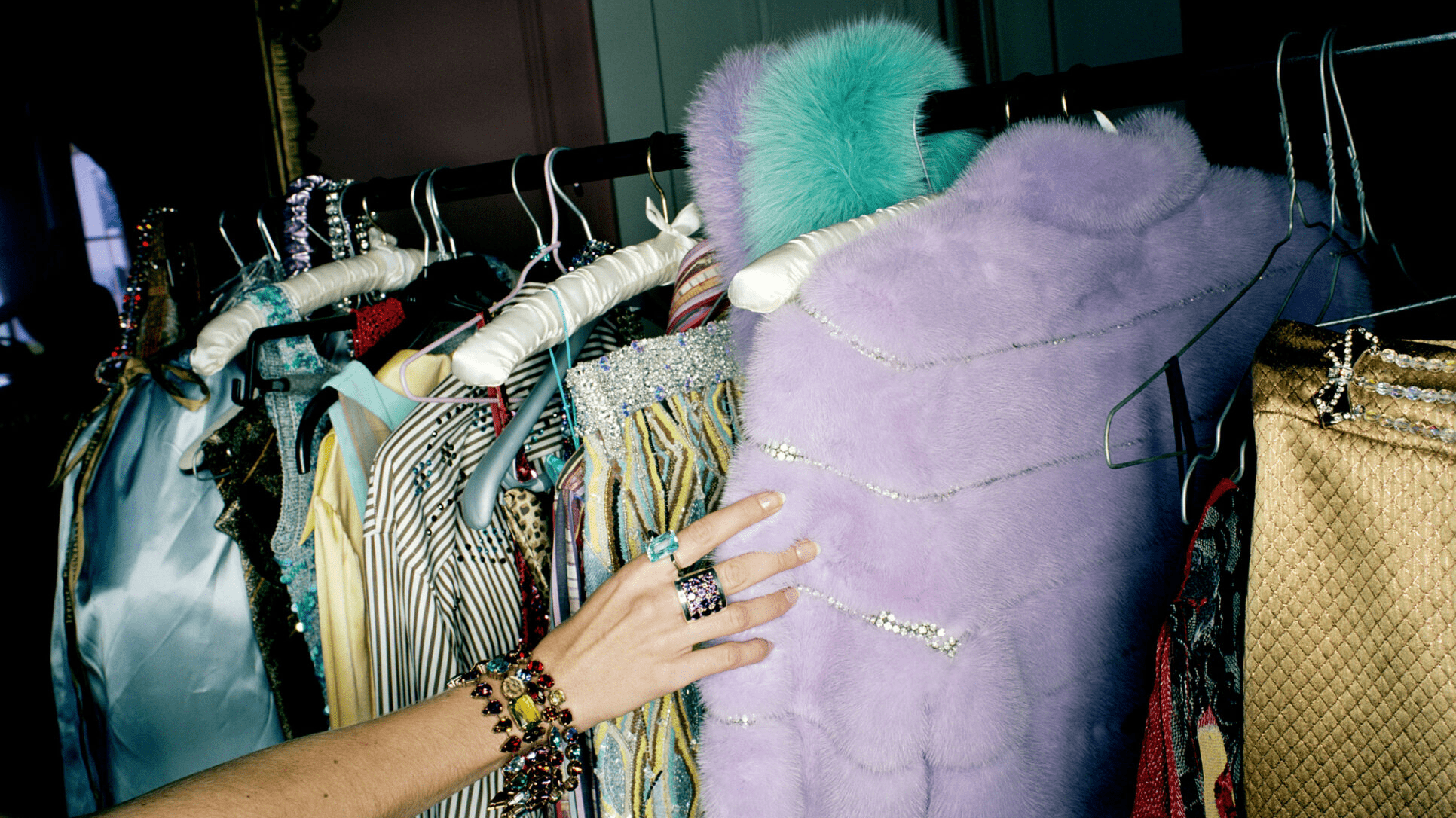Thrift and vintage are not the same thing. Here’s why.

With over 4.5 and 13.5 billion (yes, billion!) views on TikTok, respectively, #thrift and #vintage have joined forces to propel the already popular topic of second-hand fashion into the stratosphere. Both ideals have become a central shared ethos of all in the fashion world, and second-hand content has taken over the internet, kicking fast fashion to the curb.
Where once negative judgements loomed over buying second hand, caring about the environment has blurred such connotations. The desire to play our part in changing an industry littered with issues now outweighs concerns about hygiene, worn-out items, and being part of the working class.
The words’ thrift’ and ‘vintage’ seem relatively synonymous. They are not. While both ‘trends’ feed the sustainable need for second-hand clothing, vintage and thrifting are two separate entities.

The word ‘thrift’ may feel painfully American to any veteran UK charity shopper, but the word should be in our vocabulary. ‘Thrift’ refers to using money carefully and not wastefully. We use ‘thrift shopping’ as an umbrella term covering charity shops, car boot/garage sales, and flea markets – anywhere you’re sure to find a bargain.
When thrift shopping, you will see things you never knew existed, making you question who would buy them – but someone will. You’re presented with a towering mountain of weird and wonderful items to wade through, hoping your efforts will be rewarded with a gem. Most thrift shopping work comes from weeding out the Primark, and poorly DIY’d pieces from the high quality, sometimes designer labels. But that’s what makes thrift shopping so satisfying. You may have been welcomed into the store by a litany of random items. You’ve rummaged through the pots and pans, books upon books, cassette tapes, shoes, and the host of clothing items and oddly personal home decor, all to find the perfect new addition to your wardrobe.
When thrifting, the labels you’re going to see the most are high street brands like Zara, H&M and, especially at the moment, SHEIN. You will probably see a tonne of vintage, granny-chic pieces at affordable prices, mainly in the knitwear section. Unless your local area is particularly affluent, don’t expect much Tommy Hilfiger to be jumping out at you. For that, you’re going to have to leave the thrift and prepare yourself to spend a bit more cash.
You’re not going to find Zara or Primark pieces in a vintage store, and if you do, run – run and don’t look back. Vintage stores are carefully curated, offering a preselected collection of clothing for those who don’t have the time to thrift or are searching for more upmarket pieces. There might still be a bit of wading to find something your style, albeit less than thrifting, and there is no guarantee you’ll find something you love. Vintage stores cater to a wide selection of styles, from 80’s athleisure wear to 60’s mod, and you’re guaranteed to see granny-chic knitwear amongst their racks, but this doesn’t mean the place is a thrift store.
The main difference separating vintage stores from thrift ones is that the filtering through has already been done for you. Someone has spent time picking out the best pieces, removing stains and odd smells, fixing holes and ratty hems, all of which contribute to the higher price of vintage clothing. You’re guaranteed higher quality, better brands, items that fit in with modern trends, and even rare pieces that some would give an arm and a leg for and often do. The knowledge held by those buying for vintage resale means that you can feel more confident with the assurance of sustainable quality clothing as a buyer.

Vintage shops aren’t always for the light wallets, firmly removing most from our umbrella term ‘thrift’. Going into one means getting ready to spend a bit more, but the payoff is having your pick from a myriad of true vintage gems. Splurging a bit on a vintage piece never feels like a bad trade because there is an appreciation for the work that has not only gone into making a garment but keeping it alive and getting it into your hands as opposed to the hands of the binman.
So why is there so much confusion surrounding thrift and vintage? It’s because of umbrella terms. Just as ‘thrift’ has many different sub-genres of shopping hanging below it, so does the word ‘vintage’. Within this term is a myriad of sub-definitions that add to the confusion about what really is vintage – get ready to learn some vocab.
Vintage refers to the year an item was produced. An antique (from the Latin antiquus, meaning “old” or “ancient”) is a collectable item that is at least 100 years old. If the item is less than 100 years old but more than 20 years old, it is vintage – this is a pretty big time frame. Retro (from the Latin prefix retro, meaning “backwards, or in past times – particularly seen in the words retrograde or retrospective) refers to a style considered ‘trendy’ at least fifteen or twenty years ago – for example, clothing from the 1980s or 1990s.
It’s a bit confusing, right? To further add to that confounding feeling, the meaning of vintage is changing. Not officially, but the term has come to mean something different than its intended definition. At the moment, technically, vintage means anything pre-2002 – which is a little terrifying. But we can argue that ‘vintage’ now holds more meaning to it. While an item may fit under the technical definition, if you label an item ‘vintage’, people will see if you really mean ‘used from 1996’.
So thrift and vintage are different, yet thrift shopping can lead to vintage finds, which can lead to thrifty finds. Both allow for much more creative freedom in fashion, and going second hand by whatever means satisfies the need to find that thing that no one else has and everyone else wants. But by appreciating the differences between the two and somewhat understanding the meaning of vintage, hopefully, you can avoid dubiously labelled Depop buys and justify taking the plunge with the higher price tag of vintage pieces.
Discover more from GUAP’s Fashion section here





![ZINO VINCI’S ‘FILTHY & DISGUSTING’EP BRINGS YOU TO THE CORE OF THE ARTIST [@ZinoVinci]](https://guap.co/wp-content/uploads/2023/10/Zino-4.jpg)




1 Comment
[…] By Charlie Elizabeth Culverhouse […]
Comments are closed.